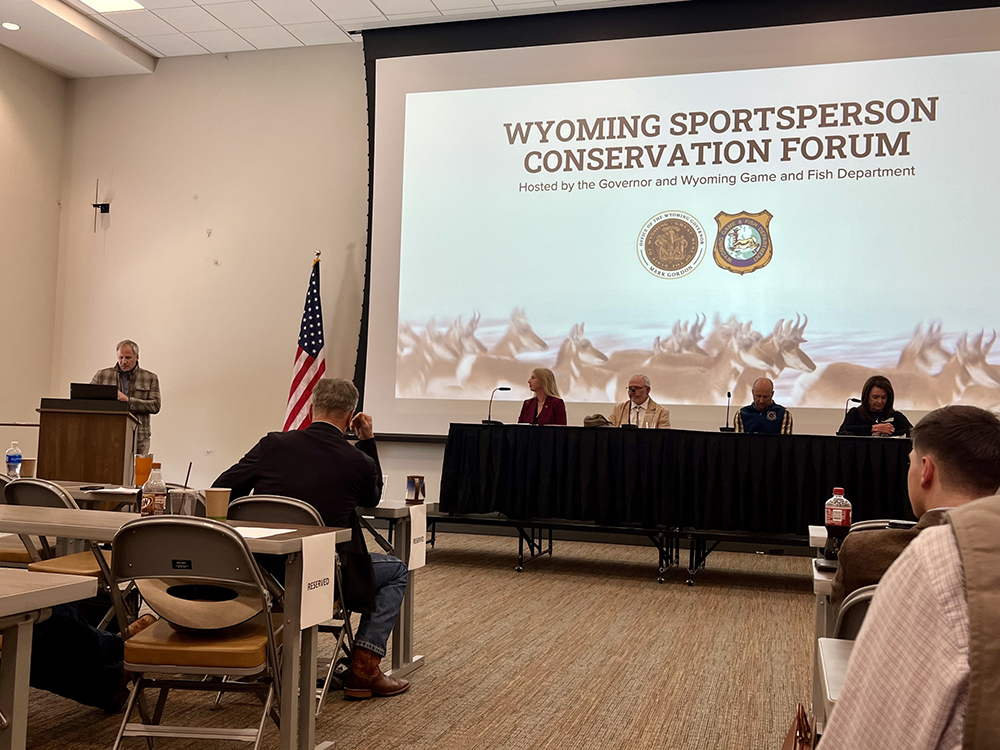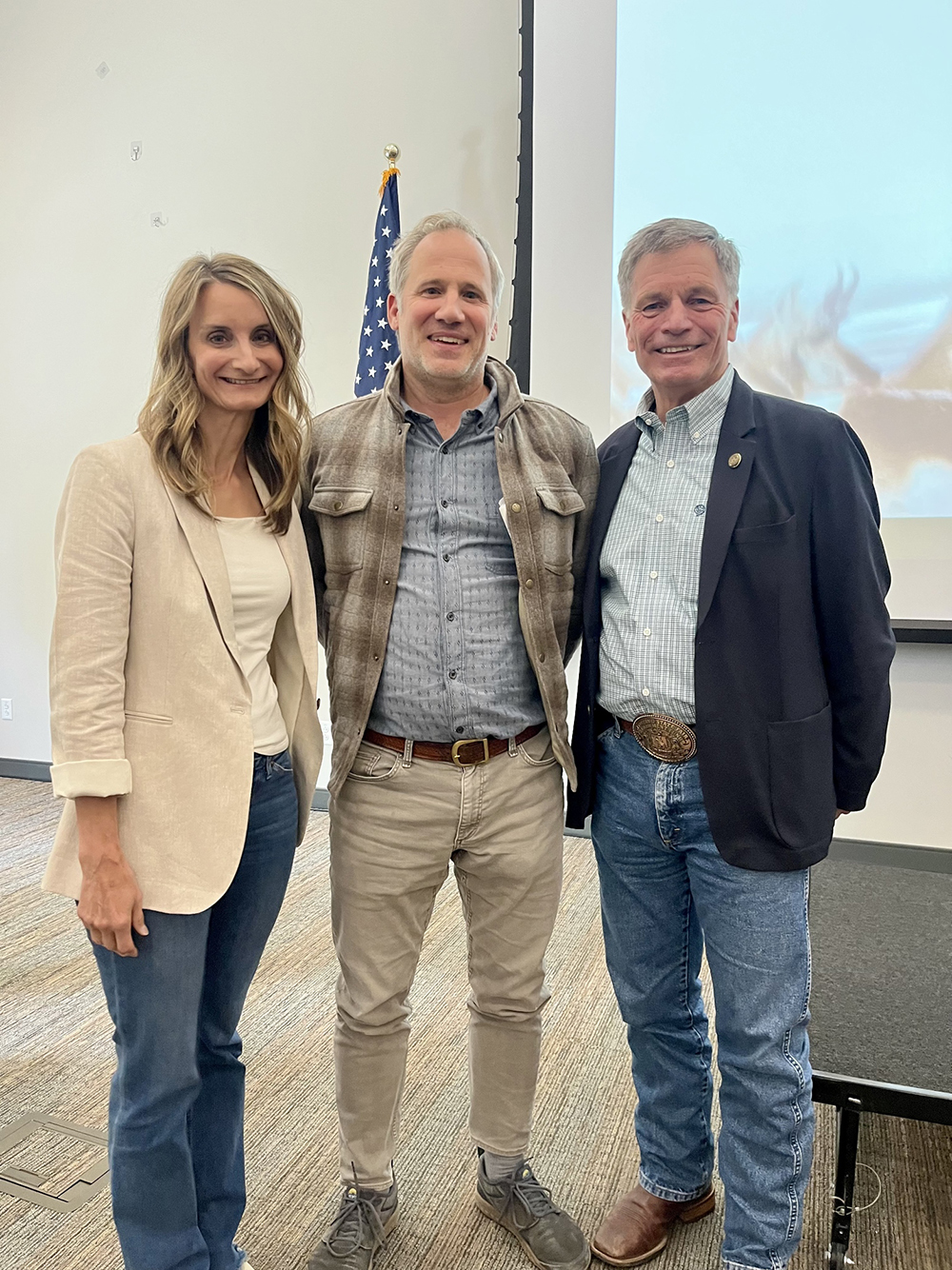Our faculty co-director Arthur Middleton recently moderated a panel titled: “Keeping Working Lands Working” at the annual Wyoming Sportsperson Conservation Forum. WY Governor Gordon attended along with federal officials, scientists, sportspeople’s groups, ranchers, and academics to discuss the future of conservation in the state. We sat down with Arthur to hear his reflections on the event.

Arthur Middleton moderates the working lands panel discussion. Credit: Laura Bell
Stone Center: What was the focus of the panel?
Arthur Middleton: We wanted to address why working lands matter for conservation. Working lands (lands that are actively managed for economic production and are typically privately owned, such as ranches, farms, and/or forests) can contain incredibly biodiverse habitats and important migration corridors for wildlife. This is particularly true in places like eastern Wyoming or the Greater Yellowstone Ecosystem. Of course, public lands are important in this conversation too, but we can’t overlook working lands.
Each panelist brought a unique perspective. Albert Sommers, a rancher and former Wyoming Speaker of the House, spoke about the importance of relationship building for furthering conservation goals. Maddie Stevenson, a third generation rancher, talked about the need for well-managed public and working lands, because her business relies on both. Justin Binfet, a Deputy Chief of Wildlife in the Wyoming Game and Fish Department and Dru Palmer, who works in the Governor’s office, shared insight on the state’s conservation priorities and approaches, and on assistance and resources available for local groups and landowners.
SC: What did you hope attendees took away?

From right: Governor Mark Gordon, Arthur Middleton, and Angi Bruce, Director of the Wyoming Game and Fish Department. Credit: Laura Bell
AM: A couple of things. First, recognition for those doing this work every day is important. Landowners who steward these places don’t always get enough credit. Too often we skip saying “thank you” and asking what these folks might need. Second, that we need more robust funding, more professionals to run these programs, and to be flexible where needed.
SC: What are some challenges you see to successful conservation outcomes on working/private lands in particular?
AM: Environmental threats caused by development or issues with invasive species are moving faster and faster. However, voluntary conservation (which can help mitigate these impacts) moves slowly. We need to vastly expand the latter and commit proper funding and staffing. For example the Sage Grouse Initiative, which started in Wyoming but expanded throughout the west, has invested about $700 million to date in protecting the Sage Grouse across millions of acres of lands. We need to hold two ideas at once: pride in these types of successes, and a sense of urgency about what still needs to be done.
SC: Any final thoughts?
AM: The Stone Center has a unique role in conversations like these. We can help connect the dots across policy, science, and management. From understanding landowners’ needs and priorities, to informing how agencies design and fund programs, to delivering our scientific research to decision makers - we can add value at each step, and I’m proud of that.
